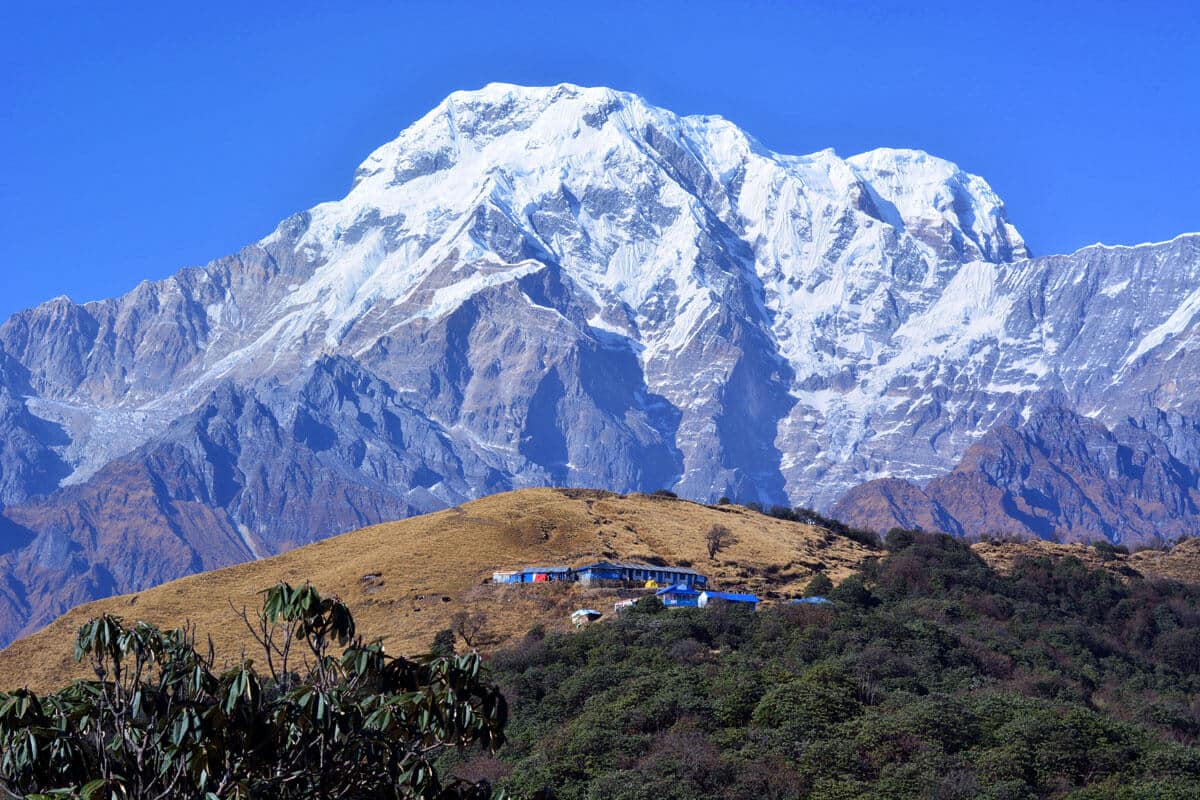Nestled in the far western region of Nepal, Api Himal stands as a majestic testament to the raw beauty of the Himalayas. Despite its awe-inspiring grandeur, Api Himal remains relatively untouched and unexplored, making it a hidden gem for adventurers and nature enthusiasts alike. This pristine mountain, with its unique cultural and natural attractions, is steadily gaining recognition as a promising destination in Nepal’s tourism landscape.
Standing tall at an impressive 7,132 meters, Api Himal is the highest peak in the Yoka Pahar range. The mountain is part of the Gurans Himal, a sub-range of the Himalayas, and is located in the Darchula district. Its remote location and the challenging terrain surrounding it have kept it relatively isolated, preserving its natural beauty and cultural heritage.
Api Himal is not just a mountain; it is a sanctuary of biodiversity. The region is home to a variety of flora and fauna, some of which are rare and endangered. The dense forests that blanket the lower slopes are rich with rhododendron, oak, and pine trees. As one ascends, the landscape transforms into alpine meadows adorned with vibrant wildflowers, creating a picturesque setting that is nothing short of enchanting.
The wildlife in the Api Himal region is equally diverse. The area is a haven for species such as the snow leopard, Himalayan black bear, blue sheep, and several species of pheasants. Bird watchers will find the region particularly appealing, with a plethora of bird species adding to the region’s ecological richness.
Api Himal offers an array of trekking routes that cater to both seasoned trekkers and those seeking to explore the Himalayas for the first time. The Api Base Camp Trek is the most popular route, taking adventurers through verdant valleys, dense forests, and traditional villages. The trek offers breathtaking views of the Api Peak, as well as the surrounding peaks such as Nampa and Jethi Bahurani.
The journey to Api Base Camp is a blend of natural splendor and cultural immersion. Trekkers get the opportunity to interact with the local communities, experiencing their unique customs and way of life. The hospitality of the locals adds a warm and welcoming touch to the adventure, making the trek a memorable experience.
The region surrounding Api Himal is inhabited by various ethnic groups, including the Byansi, Chhetri, and Brahmin communities. These communities have preserved their traditional lifestyles and customs, offering a glimpse into the rich cultural tapestry of Nepal. Visitors can experience local festivals, traditional music and dance, and age-old rituals that are an integral part of the community’s daily life.
One of the most significant cultural sites in the region is the Khalanga Malla Palace, an ancient fortress that stands as a testament to the region’s historical significance. The palace offers panoramic views of the surrounding landscape, making it a popular spot for tourists and history enthusiasts alike.
Despite its natural and cultural allure, the Api Himal region faces several challenges that hinder its potential as a major tourist destination. The region’s remote location and lack of infrastructure make accessibility a significant issue. The roads leading to the starting points of treks are often rugged and difficult to navigate, especially during the monsoon season.
However, these challenges also present opportunities for sustainable tourism development. With proper planning and investment, the region can develop its infrastructure while preserving its natural and cultural heritage. Eco-friendly accommodations, better trekking facilities, and improved transportation can enhance the visitor experience while ensuring the conservation of the environment.
Recognizing the potential of Api Himal as a tourist destination, local authorities and organizations are taking steps to promote sustainable tourism in the region. Initiatives are being implemented to improve trekking routes, build eco-friendly lodges, and train local communities in hospitality and tourism management.
One such initiative is the establishment of community-based tourism projects, which aim to involve local communities in tourism activities. These projects not only provide employment opportunities for locals but also ensure that the benefits of tourism are shared equitably. Visitors can stay in homestays, participate in local agricultural activities, and learn about traditional crafts, contributing to the local economy and gaining a deeper understanding of the region’s culture.
The future of tourism in Api Himal looks promising, with growing interest from adventure seekers and nature lovers worldwide. As the region gains more recognition, it is crucial to strike a balance between development and conservation. Sustainable tourism practices must be at the forefront of any development plans to ensure that the natural and cultural heritage of the region is preserved for future generations.
Api Himal has the potential to become a leading destination for trekking and adventure tourism in Nepal. Its untouched beauty, rich biodiversity, and cultural heritage make it a unique and appealing destination. With the right approach, Api Himal can offer an unparalleled experience to visitors while contributing to the sustainable development of the region.
For those planning to visit Api Himal, the best time to trek is during the spring (March to May) and autumn (September to November) seasons. The weather during these periods is relatively stable, offering clear views of the mountains and comfortable trekking conditions. It is advisable to be well-prepared for the trek, with proper gear and sufficient supplies, as the region is remote and amenities are limited.
Travelers should also be mindful of the cultural sensitivities of the local communities. Respect for local customs and traditions is essential in fostering positive interactions and ensuring a respectful and enriching experience for both visitors and hosts.
Api Himal, with its stunning landscapes and rich cultural heritage, is a hidden gem waiting to be discovered. As Nepal continues to emerge as a premier destination for adventure tourism, Api Himal offers a unique and off-the-beaten-path experience that is sure to captivate the hearts of those who venture into its embrace. By promoting sustainable tourism and involving local communities, Api Himal can become a model for responsible tourism development, showcasing the beauty and diversity of Nepal’s far western region to the world.






